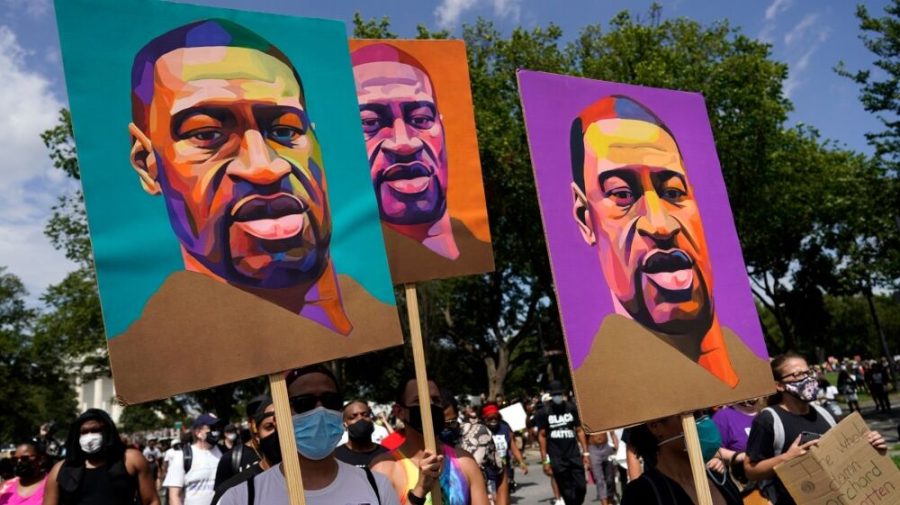George Floyd’s Killer Released: Examining The Impact
Courtesy of Carolyn Kaster, Associated Press
George Floyd’s Killer Released: Examining The Impact
October 21, 2020
It’s no secret that Derek Chauvin’s name has been a part of numerous conversations throughout the United States this past year. The former Minneapolis police officer was shown, in a widely circulated video back in May, pinning his knee on the neck of George Floyd, which ultimately led to Floyd’s death. Chauvin was arrested for the murder and released from prison on Oct. 7, after a bond agency posted 10 percent of his total bail of $1 million.
Chauvin was charged with second-degree unintentional murder, third-degree murder and second-degree manslaughter. His trial will be held in March 2021.
I’m originally from Minneapolis, and I recall waking up to this chilling video on my feed and feeling utter shock. Like everyone, I have heard endless stories of police brutality in our country, but for an instance of this magnitude to occur so close to my own home made it feel more real. The protests that followed demonstrated that the outrage of Minneapolis community members, and their voices needed to be heard.
I recall constantly refreshing my Twitter feed in the nights following the murder. The videos of the fires and destruction made me unable to look away. It was unsettling to watch our own streets being destroyed, but it undoubtedly consumed all of my attention. As I sat in my room engrossed by Twitter, I had a strange feeling. I was disappointed that Minneapolis gained attention for a terrible occurrence of police brutality and the destruction that followed. However, I was proud of my community’s peaceful responses to challenge this injustice.
After reading that Chauvin had been released last week, I felt uneasy about what the reaction was going to be in my hometown. I do support my community voicing its opinions, but I still fear that unrest and chaos will unfold in Minneapolis once again.
Our governor had a similar concern, as he announced the afternoon that Chauvin was released that he was bringing in the Minnesota National Guard, 100 state troopers and 75 conversation officers to assist Minneapolis law enforcement. That night, around 300 people peacefully protested where Floyd died in South Minneapolis and marched toward downtown, in order to protest the release of Chauvin.
They marched through the streets chanting “No justice, no peace!”
The StarTribune, a local newspaper in Minneapolis, reported that 51 people were arrested during the protests over Chauvin’s release. Later in the night, tensions increased at the Minneapolis police station, due to the involvement of law enforcement in crowd control. Some live videos on social media revealed people forced to the ground to be arrested. Most of the arrests were misdemeanors, as many were cited to have participated in unlawful assembly.
Like many other people in my community, I am disappointed that Chauvin was released. He shouldn’t be able to post bail and walk free after taking the life of Floyd. However, I think this situation has illuminated that it takes a community to be appalled in order to prompt a strong response of action.
Over the summer, I was astonished to see that the Minneapolis protests ignited change throughout the country. I can only hope that our response, and the continual protest against Chauvin and brutality that is perpetuated in this country, commands justice to be served.
The reaction over Floyd’s murder has made me proud to come from a city that stands up against racism in our own community. Maybe Minneapolis was put on the map for all the wrong reasons, including a racist murder and utter destruction. However, the deeper essence of our response is that there is a necessity of diminishing the racist and corrupt police system in our country, and that is something the whole United States can learn.







